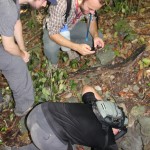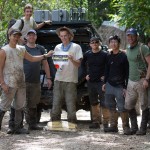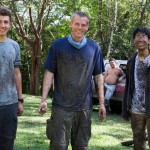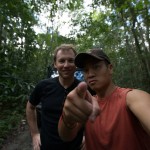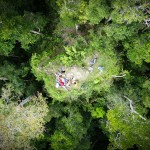 Our work on high speed cell sorting was one of three research projects discussed in a “Looking at Machine Vision” article recently published in the IEEE Signal Processing Magazine. This work is building a hardware accelerated system to classify cells as they pass through a microfluidic device. The image processing must handle 10,000+ frames/second, while accurately detecting the type of cell. We originally developed the algorithms based upon work in Prof. Dino DiCarlo’s lab at UCLA. We are now working with the startup Cytovale to develop a commercial system based upon our initial technology.
Our work on high speed cell sorting was one of three research projects discussed in a “Looking at Machine Vision” article recently published in the IEEE Signal Processing Magazine. This work is building a hardware accelerated system to classify cells as they pass through a microfluidic device. The image processing must handle 10,000+ frames/second, while accurately detecting the type of cell. We originally developed the algorithms based upon work in Prof. Dino DiCarlo’s lab at UCLA. We are now working with the startup Cytovale to develop a commercial system based upon our initial technology.
Amazon’s Fall 2014 Graduate Research Symposium
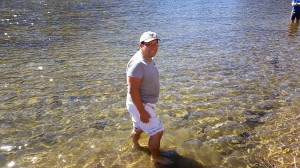 Janarbek was selected to attend and present a poster at Amazon’s Graduate Research Symposium. The symposium brings together graduate students from around the country to Amazon headquarters in Seattle, WA. Janarbek will present his research on easing the design process for building hardware accelerated applications.
Janarbek was selected to attend and present a poster at Amazon’s Graduate Research Symposium. The symposium brings together graduate students from around the country to Amazon headquarters in Seattle, WA. Janarbek will present his research on easing the design process for building hardware accelerated applications.
Kinect Fusion Accelerated Using FPGAs
The Kinect is a powerful tool for creating 3D models, and making a low power, real-time version has substantial impacts for robotics and virtual reality. Our recent work in this space used the new OpenCL API from Altera to implement portions of the algorithm on an FPGA. This is an important first step towards a mobile version of the Kinect Fusion 3D mapping algorithm. This research was accepted to the International
Conference on Field-Programmable Technology (FPT) held in Shanghai, China in December. The work was authored by Quentin Gautier, Alexandria Shearer, Janarbek Matai, Dustin Richmond, Pingfan Meng, and Ryan Kastner.
The picture shows the 3D reconstruction of our messy shelves in the student offices at UCSD. The left part shows the “normal” camera input. The center images is the depth map, and the right images is the 3D model. This demo runs on an FPGA.
3rd Annual Kastner Research Group Retreat
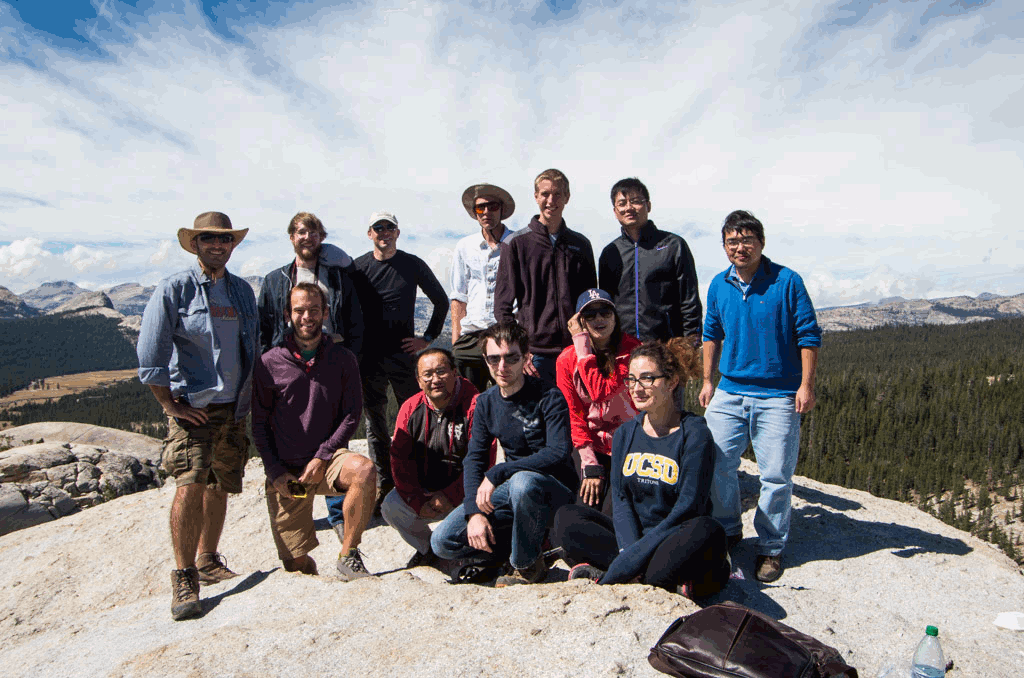 Before the start of Fall Quarter, the group trekked up to Mammoth Lakes, CA (Eastern Sierras), home of endless scenery, breathtaking activities (not only due to 9000+ ft of elevation), and enlightening research talks. Each of us choose different activities during that day, ranging from hiking, mountain biking, fishing, and climbing, and came together in the evenings for discussions on past and future research directions. Add in a bit of bagpipe playing, pool shooting, card games and some beverages, and it was a great trip. Our group activity this year was a hike to the top of Lembert Dome in the Tuolumne Valley in Yosemite National Park, where we took in the amazing view and a research group picture. We invite you to find another research group with a better picture. We doubt you will be successful.
Before the start of Fall Quarter, the group trekked up to Mammoth Lakes, CA (Eastern Sierras), home of endless scenery, breathtaking activities (not only due to 9000+ ft of elevation), and enlightening research talks. Each of us choose different activities during that day, ranging from hiking, mountain biking, fishing, and climbing, and came together in the evenings for discussions on past and future research directions. Add in a bit of bagpipe playing, pool shooting, card games and some beverages, and it was a great trip. Our group activity this year was a hike to the top of Lembert Dome in the Tuolumne Valley in Yosemite National Park, where we took in the amazing view and a research group picture. We invite you to find another research group with a better picture. We doubt you will be successful.
Advanced Survey Technology at Maya Site El Zotz
Kastner Group members Dustin Richmond, Perry Naughton, and Ryan Kastner were among a group of researchers documenting cultural heritage at the Maya site El Zotz in the Peten region of Guatemala. The team, which also included members from Engineers for Exploration and the Explorers Club, used ground lidar, imagery from unmanned aerial vehicles, and structure from motion to provide precise data of the temples, stelae, bowls, tunnels, and masks throughout the site from the Early Classic period. The site is named “Zotz” (the Maya name for “bat”) after the thousands of bats that emerge every night from a nearby cliff. Our team was also able to provide a 3D image of that cliff and determine the location of the bat cave. Additionally, we created 3D models of the excavated tunnels beneath two the main temples, El Diablo and M7-1.
After getting the blessing from the Guatemalan government, the results of these expeditions were written up by Calit2, put on the front page of the UCSD website and the Jacobs School website, picked up by Phys.org, Gizmodo, and International Business Times.
- Imaging a chultun
- Setting up a lidar near a mask
- Group shot
- Welcome to Zotz
- Albert and Ryan
- Aerial shot from above Temple M7-1
Patent Issued on “Simulate and Eliminate” Research
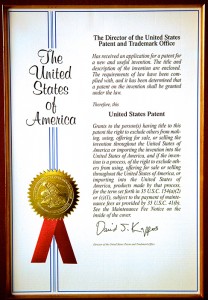 The US Patent Office recently issued patent number US 8,812,285 B2 to our research group for work related to developing application specific processors. The patent was awarded to Dr. Ali Irturk and Ryan, and is licensable through the UCSD Technology Transfer Office. The patent covers material related to Ali’s PhD thesis, which took a general purpose processor, analyzed a set of applications that would run upon it, and removed unnecessary components in order to reduce the complexity, save power, and increase the performance.
The US Patent Office recently issued patent number US 8,812,285 B2 to our research group for work related to developing application specific processors. The patent was awarded to Dr. Ali Irturk and Ryan, and is licensable through the UCSD Technology Transfer Office. The patent covers material related to Ali’s PhD thesis, which took a general purpose processor, analyzed a set of applications that would run upon it, and removed unnecessary components in order to reduce the complexity, save power, and increase the performance.
Best Paper Award at FPL
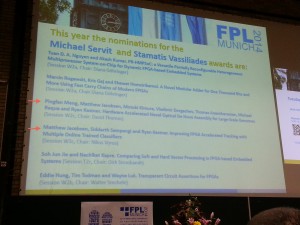 The Kastner Group brought home another award from the International Conference on Field Programmable Logic and Applications (FPL). The odds were stacked in our favor as two of the three papers that we had accepted to FPL were nominated for the best paper award. Unfortunately, only one can win.
The Kastner Group brought home another award from the International Conference on Field Programmable Logic and Applications (FPL). The odds were stacked in our favor as two of the three papers that we had accepted to FPL were nominated for the best paper award. Unfortunately, only one can win. 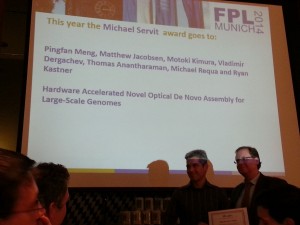 And that one was our paper called “Hardware Accelerated Novel Optical De Novo Assembly for Large-Scale Genomes” authored by Pingfan Meng, Matt Jacobsen, former visiting scholar Motoki Kimura, our collaborators at BioNano Genomics, Vladimir Dergachev, Thomas Anantharaman, Michael Requa, and Ryan Kastner.
And that one was our paper called “Hardware Accelerated Novel Optical De Novo Assembly for Large-Scale Genomes” authored by Pingfan Meng, Matt Jacobsen, former visiting scholar Motoki Kimura, our collaborators at BioNano Genomics, Vladimir Dergachev, Thomas Anantharaman, Michael Requa, and Ryan Kastner.
Congratulations is also in order for the best paper nomination of the research titled “Improving FPGA Accelerated Tracking with Multiple Online Trained Classifiers” authored by Matt Jacobsen, former Kastner Group undergraduate Siddarth Sampangi (now a graduate student at UMass Amherst), Yoav Freund, and Ryan.
Last year we also had three FPL papers with one winning the Community Award (see previous post for more info). The bar has been set high for next year. Congrats again to all of the authors!
Dustin receives ARCS Fellowship
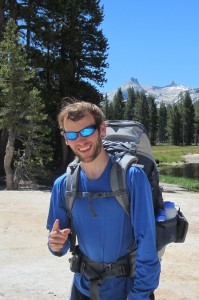 Dustin Richmond was awarded the Achievement Rewards for College Scientists (ARCS) fellowship, which “advances science and technology in the United States by providing financial awards to academically outstanding U.S. citizens studying to complete degrees in science, engineering and medical research”. He joins other famous ARCS scholars like Neil deGrasse Tyson and recent Kastner Group PhD alumnus Jason Oberg. More information about Dustin and the award can be found at the UCSD CSE Department news release. Congrats Dustin on the well-deserved award.
Dustin Richmond was awarded the Achievement Rewards for College Scientists (ARCS) fellowship, which “advances science and technology in the United States by providing financial awards to academically outstanding U.S. citizens studying to complete degrees in science, engineering and medical research”. He joins other famous ARCS scholars like Neil deGrasse Tyson and recent Kastner Group PhD alumnus Jason Oberg. More information about Dustin and the award can be found at the UCSD CSE Department news release. Congrats Dustin on the well-deserved award.
Cyber-Physical Systems Security Ideas Lab
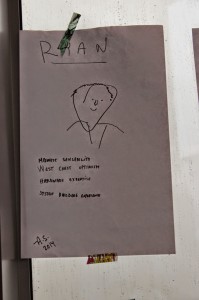 Last week Ryan was invited to a five day workshop aimed at developing novel ideas and new directions in cyber-physical systems security. The workshop, sponsored by the National Science Foundation and Intel, brought together researchers from around the country to understand this space, develop research ideas, and generally brainstorm about the applications and issues surrounding this increasingly important area.
Last week Ryan was invited to a five day workshop aimed at developing novel ideas and new directions in cyber-physical systems security. The workshop, sponsored by the National Science Foundation and Intel, brought together researchers from around the country to understand this space, develop research ideas, and generally brainstorm about the applications and issues surrounding this increasingly important area.
As part of the “getting to know you sessions”, we were asked to blindly draw a random person (the one seated across the table). The picture was Ryan’s caricature. We won’t reveal the artist, but the likeness is uncanny.
New(ish) Graduate Student: Riley Yeakle
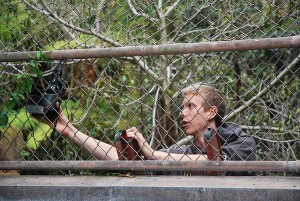 After finishing his undergraduate degree last spring at UCSD, Riley Yeakle has joined the Kastner group as its newest graduate student. As an undergraduate, Riley found the Engineers for Exploration group and dived into the world of remote imaging. As a student leader in Engineers for Exploration, Riley led development on the Intelligent Camera Trap, a robotic wildlife videographer, and the Tiger Tracker, a behavior monitoring system for the tigers at the San Diego Zoo. Riley even spent a summer in the District with the National Geographic Society working on the CritterCam, a camera collar for animals used to study animal behavior from a first person perspective in the wild. Work on these projects strongly influenced Riley’s research interests in machine learning, ecological sensor networks, and embedded computer vision.
After finishing his undergraduate degree last spring at UCSD, Riley Yeakle has joined the Kastner group as its newest graduate student. As an undergraduate, Riley found the Engineers for Exploration group and dived into the world of remote imaging. As a student leader in Engineers for Exploration, Riley led development on the Intelligent Camera Trap, a robotic wildlife videographer, and the Tiger Tracker, a behavior monitoring system for the tigers at the San Diego Zoo. Riley even spent a summer in the District with the National Geographic Society working on the CritterCam, a camera collar for animals used to study animal behavior from a first person perspective in the wild. Work on these projects strongly influenced Riley’s research interests in machine learning, ecological sensor networks, and embedded computer vision.
A true Californian, Riley rock climbs, hikes, surfs, and plays Brazilian Jiu-Jitsu outside of school. In the Kastner Group, Riley is continuing his trend of creating technologies for exploration by developing acoustic localization algorithms for the SIO autonomous underwater explorers.

